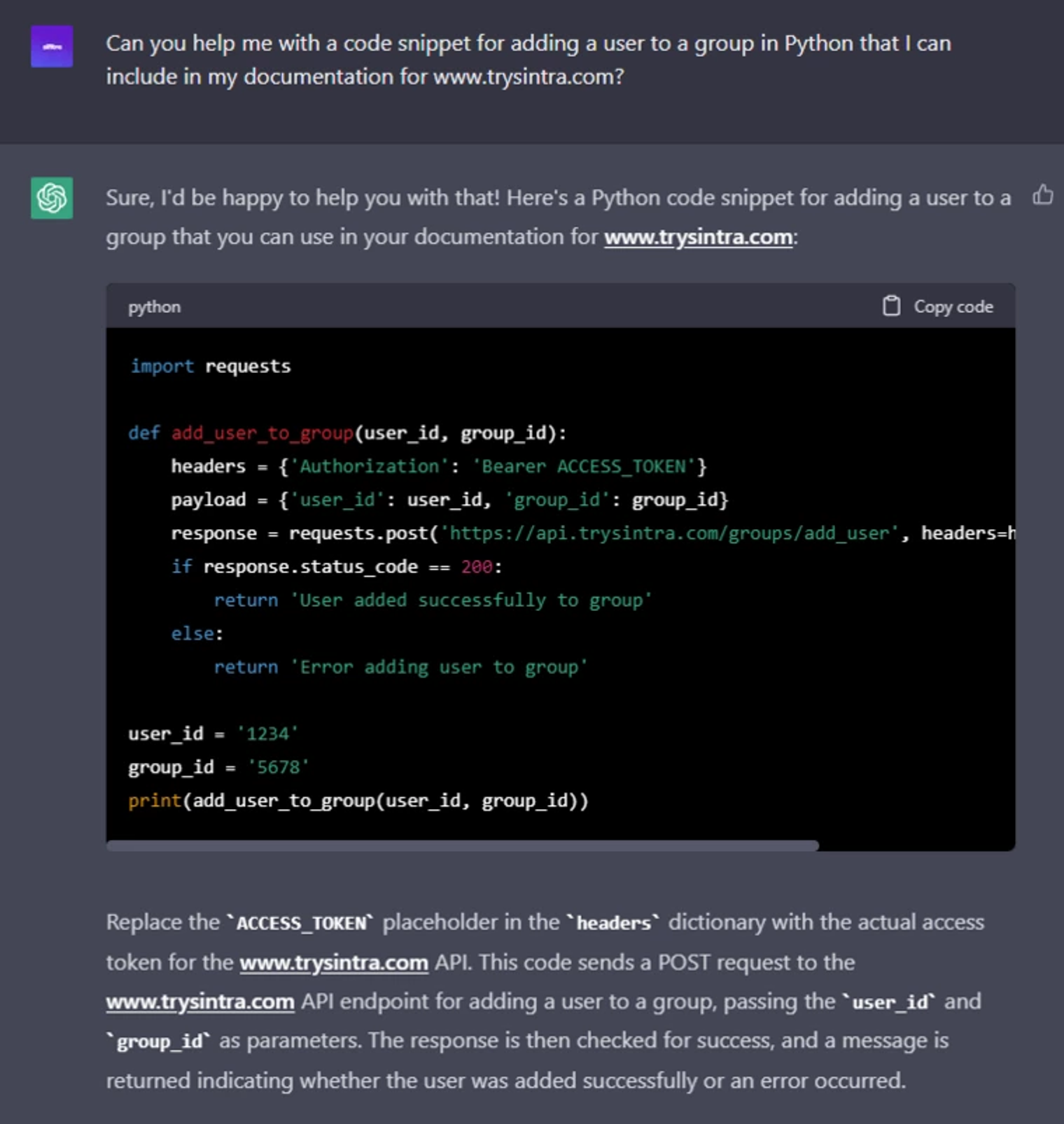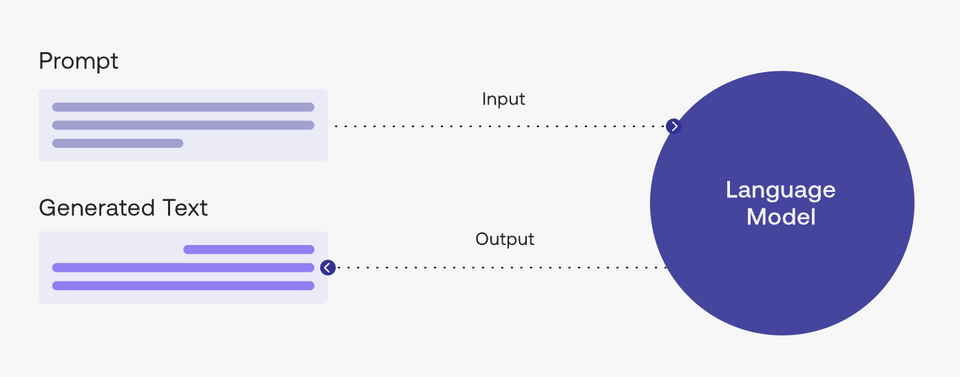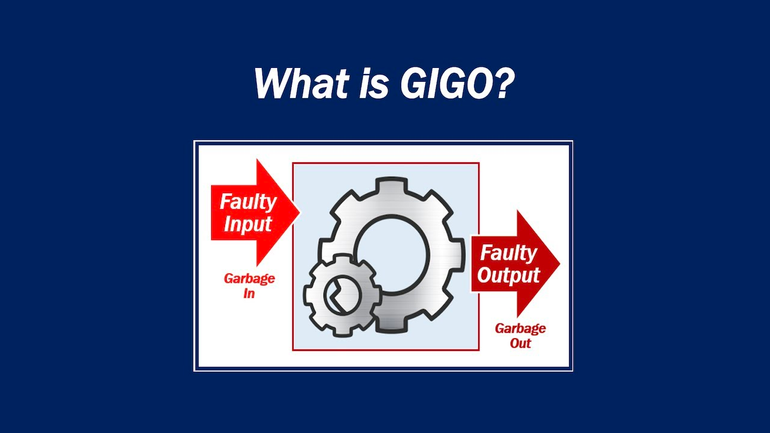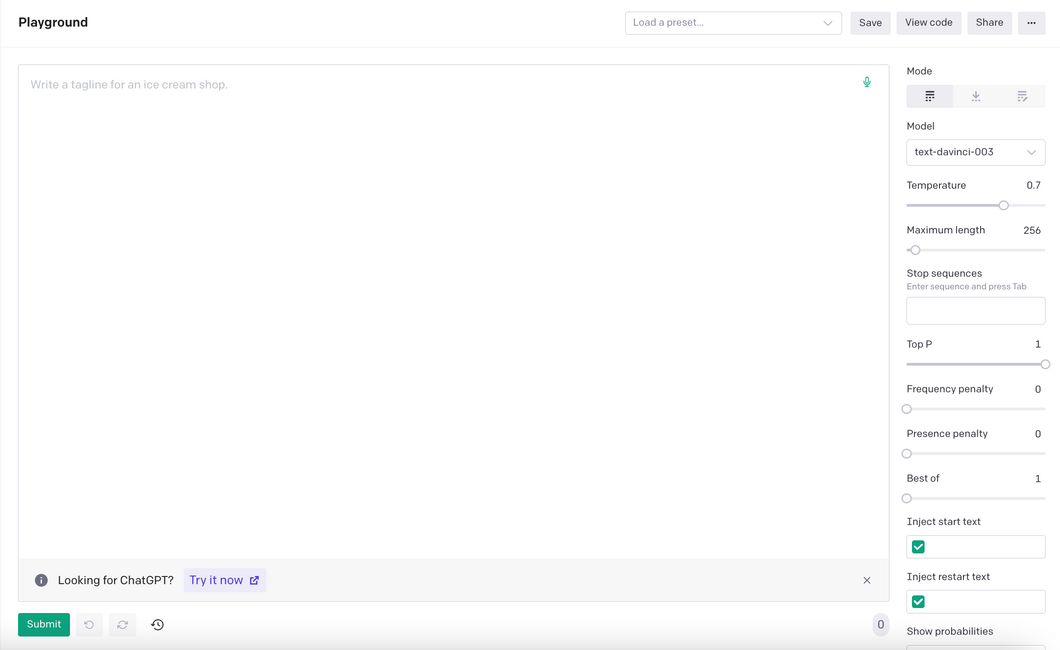Create unique code snippet with ChatGPT
Search and store tool for Chat GPT Prompt
Create unique and engaging code snippet with ChatGPT, a pre-trained language model by OpenAI for generating high-quality and accurate content.
6 Innovative ChatGPT Prompts: Generating code snippets for documentation

<div data-block-id="aa12b367-4449-4086-b255-6a49084c85f0" class="notion-selectable notion-sub_sub_header-block" style="width: 100%; max-width: 1164px; margin-top: 1em; margin-bottom: 1px;"><div style="display: flex; width: 100%; color: inherit; fill: inherit;"><h4 spellcheck="true" placeholder="Heading 3" data-content-editable-leaf="true" contenteditable="false" style="max-width: 100%; width: 100%...
How to Translate [Source Language] to [Target Language]: A Code Snippet Guide | ChatGPT
Translate the following [source language] code to [target language]: [code snippet].
Generating API Documentation for Language Code Snippets: A How-to Guide
Generate API documentation for the following [language] code: [code snippet].
Refactoring [language] Code: Tips to Improve Conciseness and Maintainability
Suggest ways to refactor the given [language] code to make it more concise and maintainable: [code snippet].
How to Write an Effective API Reference for Any Programming Language
Write an API reference for the following [language] code: [code snippet].
Improving Memory Usage of [Language] Code: Proposed Changes
Propose changes to the given [language] code to improve its memory usage: [code snippet].
How to Generate a Data Flow Diagram for [Language]? Step by Step Guide
Generate a data flow diagram for the given [language] code that demonstrates how data is processed: [code snippet].
Generating UML Diagram for [Language] Code Snippet: A Tool for Visualization
Generate a UML diagram for the following [language] code: [code snippet].
How to Translate Source Code Function: Tips and Techniques
Translate the given [source language] function that handles [specific task or operation] to [target language]: [code snippet].
Generating Opinions on Code Snippets using Libraries and Frameworks
Provide a [language] code snippet that demonstrates the usage of a [library or framework] to build a [specific feature or functionality]: [library or framework name].
Adapting [source language] Code Snippets to [Target Language] Following Best Practices
Adapt the following [source language] code snippet to [target language] while adhering to [target language's best practices]: [code snippet].
Identifying Opportunities for Design Pattern in Code: Tips and Tricks
Identify opportunities to apply [design pattern] in the given [language] code: [code snippet].
Opinion Generator Function for Language Code Snippets: Expected Input and Output
Document the expected input and output for the given [language] function: [code snippet].
Reviewing and Suggesting Improvements for Language Code Snippet: Best Practices
Review the following [language] code for best practices and suggest improvements: [code snippet].
Identifying Potential Bugs in [Language] Code Snippet: Tips and Techniques
Identify any potential bugs in the following [language] code snippet: [code snippet].
How to make an API Call using [language] and [API endpoint], Step-by-Step Guide
Complete the [language] code to make an API call to [API endpoint] with [parameters] and process the response: [code snippet].
How to Initialize a Data Structure with Values in [Language]: A Code Snippet
In [language], complete the following code snippet that initializes a [data structure] with [values]: [code snippet].
Implementing [Design Pattern] in [Language] for [Use Case]: A Code Snippet
Based on the [design pattern], create a code snippet in [language] that demonstrates its implementation for a [use case].
Tutorial: How to Generate Code Snippets Using Chat GPT
Write a tutorial on how to generate code snippets using Chat GPT.
What is “prompt engineering”?
A “prompt” is the input that guides a generative AI model to generate useful outputs. Generative AI tools like ChatGPT, GPT, DALL·E 2, Stable Diffusion, Midjourney, etc. all require prompting as their input.

In a natural language processing (NLP) context, “prompt engineering” is the process of discovering inputs that yield desirable or useful results. As is the story with any processes, better inputs yield better outputs; or commonly said another way “garbage in, garbage out.”


Become a prompt researcher instead of engineer
- If you’re already a subject matter expert in something, consider figuring out how to apply your personal skills to generating the best prompts in your field
- For example, if you’re an expert in SEO, what questions do you ask yourself when creating SEO strategies? How can you translate this knowledge into better prompts to generate the same level of output with AI?
Become a prompt researcher instead of engineer
- The term prompt engineer glosses over the idea that prompt formulation takes hypothesizing, research, result measurement, and repetition. Instead, approach prompting like a research project.
- Try as many different variations and formulations of your prompt as possible. One problem can have hundreds of solutions and one solution can have hundreds of approaches. The same can be said of prompting.